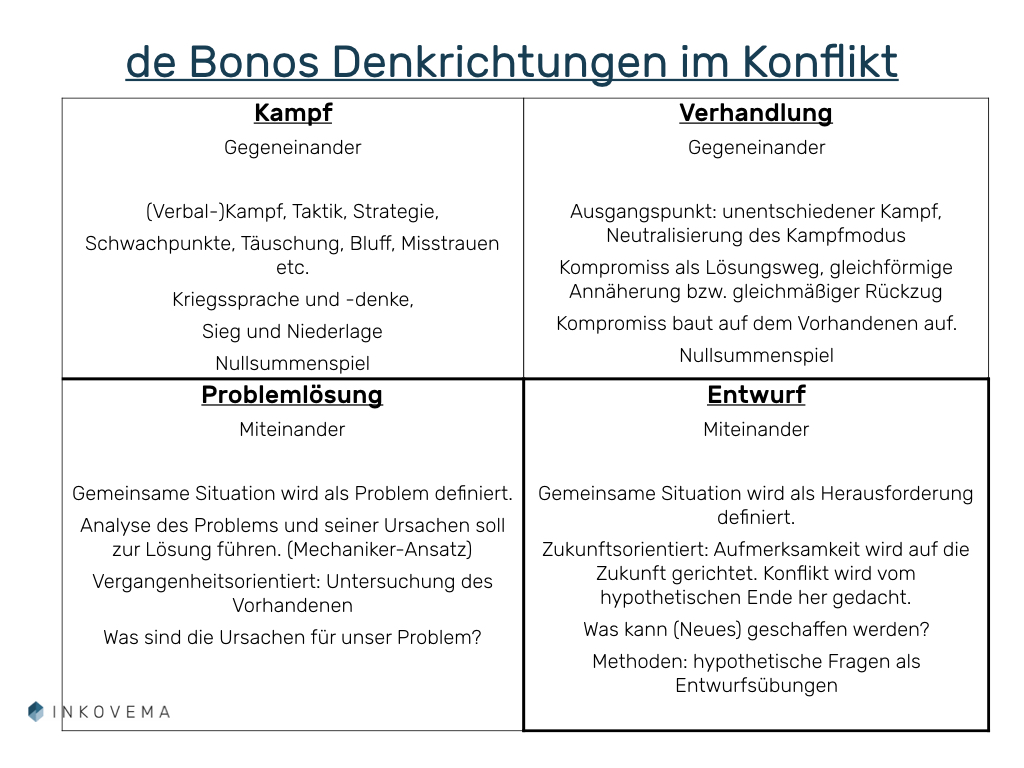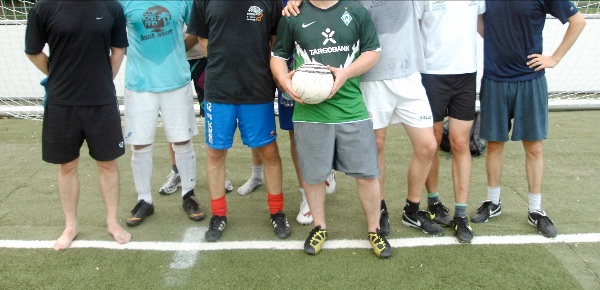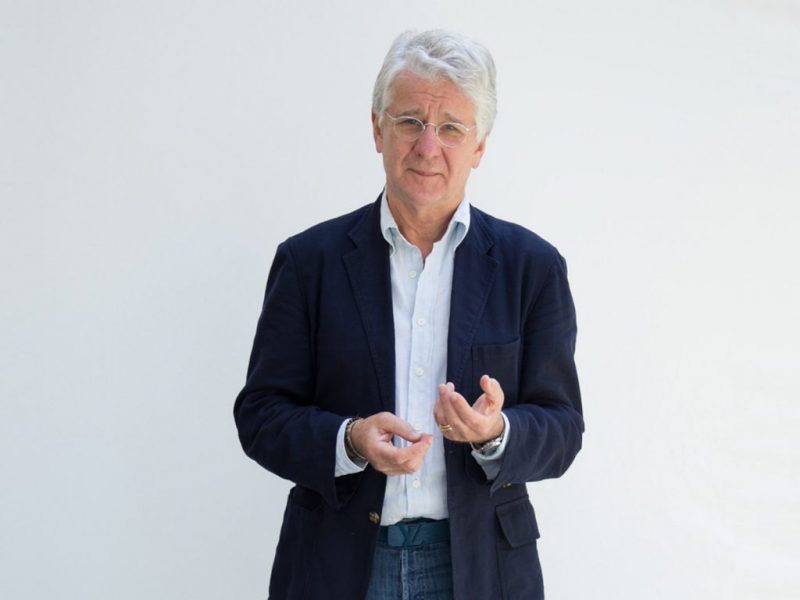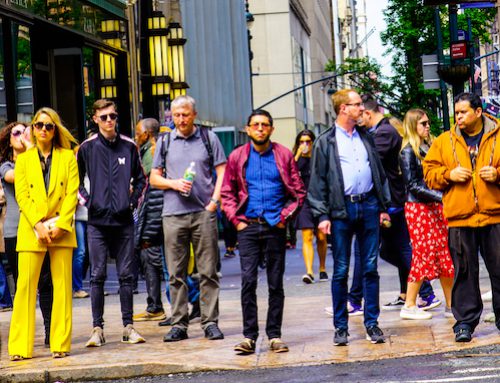INKOVEMA Newsletter
Mediation and conflict management
# 43
A. Key topics:
– Incidence of violence in amateur football
B. Concepts for Mediation – Part 11: Edward de Bono's Conflict Perspectives Grid
Current events
- In July 2019 the DFB published its situation report on amateur football, in which it noted an increase in violence against referees, for example. In the 2018/2019 season, there were 2,906 attacks on referees compared to 2,866 attacks in 2017/2018, even though around 50,000 fewer matches were played. Link
- In October 2019 all referees go on strike in Berlin to draw attention to the „increasing violence“ against them. Link
- End of October 2019 a player knocks a referee unconscious in Hesse. The case causes a nationwide stir.
- Just two weeks later, in November 2019, In Hesse, four visiting players and their coach once again violently assaulted the referee. Link
Beginnings
In Germany, around 80,000 amateur football matches are played every week. Violence has always been sporadic, but has attracted media attention, e.g. against the referee, opposing players or spectators. Racist riots also occur. At times, frustration potential is also unleashed when football pitch resources are limited and double occupancy of pitches and halls „has a provocative “ effect.
- Already since 1998 There are corresponding violence prevention programmes and mediation projects that are intended to establish systematic conflict management. At the time, the Sportjugend Hessen was responsible for this in cooperation with the Hessian Football Association. Link
- Interview with a former amateur referee who involuntarily ended his career as a result of the violence. Link
Current measures
- Football fans have the initiative #GABAF The joint action alliance for the promotion of amateur football was founded. Link
- The Berlin Football Association has decided on tougher penalties for violence against referees. Link
- The teams and clubs can Preventive training for which experienced conflict counsellors are available, e.g. the Colleagues Angelika Ribler and Astrid Pulter from the Institute for Sports Mediation (http://www.institut-sportmediation.de), who have accompanied and supported the Hessian Football Association since 1998. Link
- The DFB is now collecting nationwide data to shed light on what is actually being discussed on this topic. Link This is because, to the extent that the data from NRW is representative, a There has been no increase in violence in recent years. Instead, these offences are increasingly being filmed and posted on social media. Link
Promoting exchange
The most important rules of Ultimate Frisbee
- Spirit of the Game: Ultimate emphasises sportsmanship, decency and fair play. Although fighting is encouraged, it must never be at the expense of respect for the opponent, the rules and the fun of the game.
- Physical contactNo physical contact is allowed between players. All players must pay attention to this. Obstructing the defence by an attacking player, as in basketball, is also prohibited ("pick"). In principle, any physical contact is a foul.
- Foul play: If a player touches an opponent, this is a foul. The foul is called by the player who was fouled. If the attacking player loses the disc in the process, play is interrupted and resumed after a "check" as if the foul had not occurred. If the fouling player does not agree with the foul call, the last pass is repeated.
- Personal responsibility
There are no external referees. Each player is responsible for reporting fouls or line offences (first ground contact must be in, the line counts as an out). The players settle their differences of opinion in a fair manner.
Detailed set of rules Link
From the INKOVEMA podcast
- „Today everyone is holding their head even though they have been fouled on the foot “ (Interview with Marcel Reif, 2017)
Concepts for mediation
Part 11: Edward de Bono's Conflict Perspectives Grid
In the eleventh part, we would like to introduce you to an almost forgotten grid that was developed by Edward de Bono in his 1987 published in German Book „Conflicts. New solutions and strategies“ had appeared.
Particular attention should be paid to the difference that becomes apparent in the horizontal: The top two windows show an opposition in which the parties also define their different perspectives as two problems (which are directed against each other). The bottom two show that both perspectives do not lead to two problems being dealt with, but only one! This is also the The process that mediation aims to bring about. Not from opposing each other to unity in the solution, but to defining the common situation as a common problem. Then acceptable solutions can be found. Incidentally, design expertise is a strategic quality in solution work.






Leave A Comment